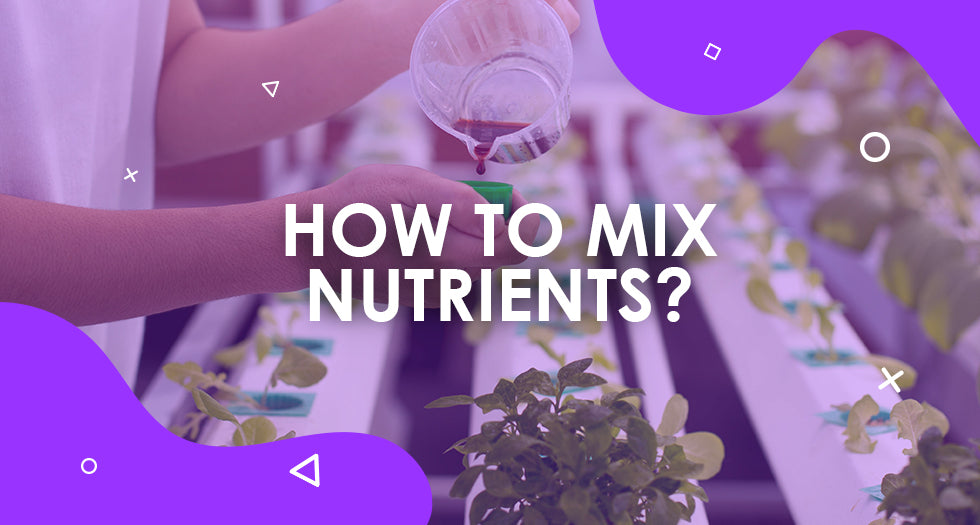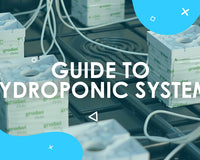The Importance of Mixing your Nutrients Correctly
Do you find yourself wondering if your nutrient solution is exactly as it should be? Many growers overlook the process of mixing up their nutrient solution, which when done improperly can lower your final yields. In the text below, you will learn the simple steps of mixing your solution correctly, as well as key components that will help you boost your yields along the way.
Understanding your Water
Understanding your water is the first important step to take into account when mixing your nutrients. Depending on whether you are in a hard water area, or a soft water area, will depend on which variety of nutrients you need to use, as well as any additional additives.
If you are using tap water, you should let this sit for approximately 24 hours to allow for the Chlorine to be released. To speed this up, growers use products like Ecothrive Neutralise to dechlorinate their water, making it ready for use straight away.
Many growers in hard water areas opt for using a reverse osmosis filter. The benefit of this is you will be starting with an EC of 0.0. This is great because you are in total control over how much of each nutrient your plant receives. For example, our tap water is 0.7EC as we are in a hard water area. The issue with this is there is no way to guarantee the make up and quantities of micronutrients and macronutrients. In general, hard water areas contain a higher quantity of calcium and magnesium so it is important not to add too much CalMag to your reservoir. When using reverse osmosis water, it is essential to add CalMag each time.
Many brands will show you the recommended dosage of each nutrient, as well as what the desired EC reading should be. Whilst this is great to use as a guideline, it is important to avoid overfeeding as the damage can be irreversible in some instances, and in others takes a while to correct, ultimately slowing down the overall development of your plants. At London Grow we always recommend to start on the lower end of the dosages, and increase this as you feel necessary in line with your plant’s development. Now we have a good understanding of our water, we can move onto mixing up the solution.
What You’ll Need
There are many useful pieces of equipment to take into consideration when preparing your nutrients. pH and EC meters are essential for your grow as these two factors will greatly influence your plants development. We recommend using the Bluelab pH pen as this will also show you the temperature of your solution. It is important to keep your solution cold, between 18 and 22C as anything above this can create an environment in which harmful pathogens thrive. If you are using liquid nutrients, it’s important to measure these accurately so we recommend using assorted sizes of pipettes, syringes and jugs depending on the size of your reservoir. Growers using powdered nutrients such as the Athena Pro line, and the VEG+BLOOM range should use accurate scales to ensure that the correct quantities are added.

Bluelab pH Pen
|

Round Plastic Bucket
|

Bluelab EC Pen
|
Mixing
Whether you’re mixing your solution in a bucket, a reservoir, or simply a 1L jug, it’s important to work out how much of each nutrient you need to add. For example, CANNA Coco A & B are to be added in equal parts to your reservoir. We always advise to add part A, mix well, then let it settle. You can then introduce part B, mix well, then let it settle.
Mixing the two together when undiluted in one container will cause a chemical reaction. This will either cause your solution to separate, or go cloudy. Both are indications that a chemical reaction has occurred between the nutrients. At this stage you must pour the solution away, and start again.
Once you are satisfied that the solution is well mixed, it is then important to measure your EC (electrical conductivity) to ensure that the readings are within the correct range in accordance to the feed chart. This is detrimental to your grow as if the EC is too high in relation to the stage of growth your plant is at, you could overfeed it causing irreversible damage. Further to this, providing your plants with too little of the base nutrients will cause a deficiency in your plant. We’ll be covering more on this in a future post.
After the base nutrients have been added, you can now move onto any additional additives you would like to include such as Biogreen X-Rooting and Biozym.
Once your nutrient solution is within optimal range, it is then time to bring your pH within the correct range. Growers using Coco Coir should keep their solution slightly acidic, with pH between 5.8 and 6.1. Growers in soil should aim to keep their readings between 6.0 and 7.0. This is vital because plants uptake different nutrients at different rates, depending on the pH level. Keeping your solution within the above range will help optimise nutrient uptake in the root zone. Growers use top-quality pH up and down liquids from brands such as BioBizz and Growth Technology to ensure best results. We always recommend to lower your pH once all of your nutrients have been added, as some are more alkaline than others, which means that your pH reading will not be the same at the start as it will at the end.
In the above text we have learnt the importance of your water, and how to prepare your nutrients correctly to ensure that your plants are absorbing a high quality, well mixed solution. We’ve learnt that using a pH and EC meter is essential for delivering accurate results. The result of this is an unrivalled harvest, with little to no issues throughout the grow cycle providing the correct ratios of nutrients have been given to the plant in line with which stage of the growth cycle, whether that be vegetative or blooming.

SHOP NOW READ MORE






